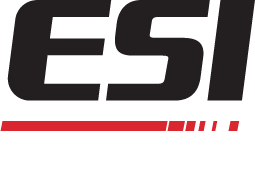Top Questions About Electron Beam Technology
Flexible Packaging and ebeam Advantages
The choice to use electron beam technology is easy; the efficiency of productions, long-term savings, and the sustainable effects on the environment are top reasons to choose this advanced solution. It is a simple choice; however, it is a very complex process. Understanding every bit of the technology and science behind EB technology is difficult for anyone, but even those who are familiar with every aspect of the technology still have questions. At ESI we have gathered a few questions that frequently come up from prospects, individuals, and companies wanting to learn more about the technology.
Is Electron Beam Technology New?
Electron beam technology has been around for a while, but it was not until the 1960s that it was considered for commercial use. Industries were looking for a way to accelerate their production process and ESI founders had the answer. Low-energy electron beam processors were the first step for ESI’s total solution approach. This technology is used in the converting industry to cure inks, varnishes, adhesives, silicone release coatings and laminates. It is also used to cure coatings which are applied to automotive parts, like tires, furniture, and much more.
Now, almost 60 years later, EB technology still has a huge impact on a variety of companies’ industrial applications. The benefits of EB continue to grow, making it more sustainable, cost-efficient, faster, and more. EB will continue to advance and expand to more and more markets, improving quality and business processes every step of the way.
Why Does EB Technology Require Nitrogen?
EB is unique because it performs best in low oxygenated environments, specifically when it involves inks, adhesives, and coatings. With a low oxygen environment, the inks, adhesives, and coatings are able to convert from a liquid to a solid through EB processing. Adding Nitrogen gas to the curing process displaces the oxygen. That is why on a lot of ESI’s systems there are multiple Nitrogen Nozzles, or inboard jets that pump in the nitrogen, to ensure that the machine is creating an environment that has a minimal amount of oxygen.
Does ESI use Low-Migration Inks? Why?
ESI uses low-migration inks for its technology for many reasons. One of the main reasons for the use of low-migration inks is the odorless component. When working with food packaging, it is important that the inks do not smell; if the packaging smelled then the food would eventually smell as well, leading to very unhappy consumers. Although avoiding inks with smells is important for people, it is even more important for pets. Since pets have more sensitive senses, it is important that pet food packaging does not have any evidence of an odor other than the food.
Where Can I Buy Low-Migration Inks?
This question comes up pretty frequently when prospects are looking to invest in an EB system. The answer is very simple. Any large ink company will have low-migration inks. Because of how important they are for production, these inks are not difficult to find at all.
Have More Questions? Call Us!
Although we cannot answer every possible question on our blog, ESI still wants to give you answers. If you have more questions for ESI about EB technology, EB crosslinking, and whether or not it is the right choice for you, please contact us!

